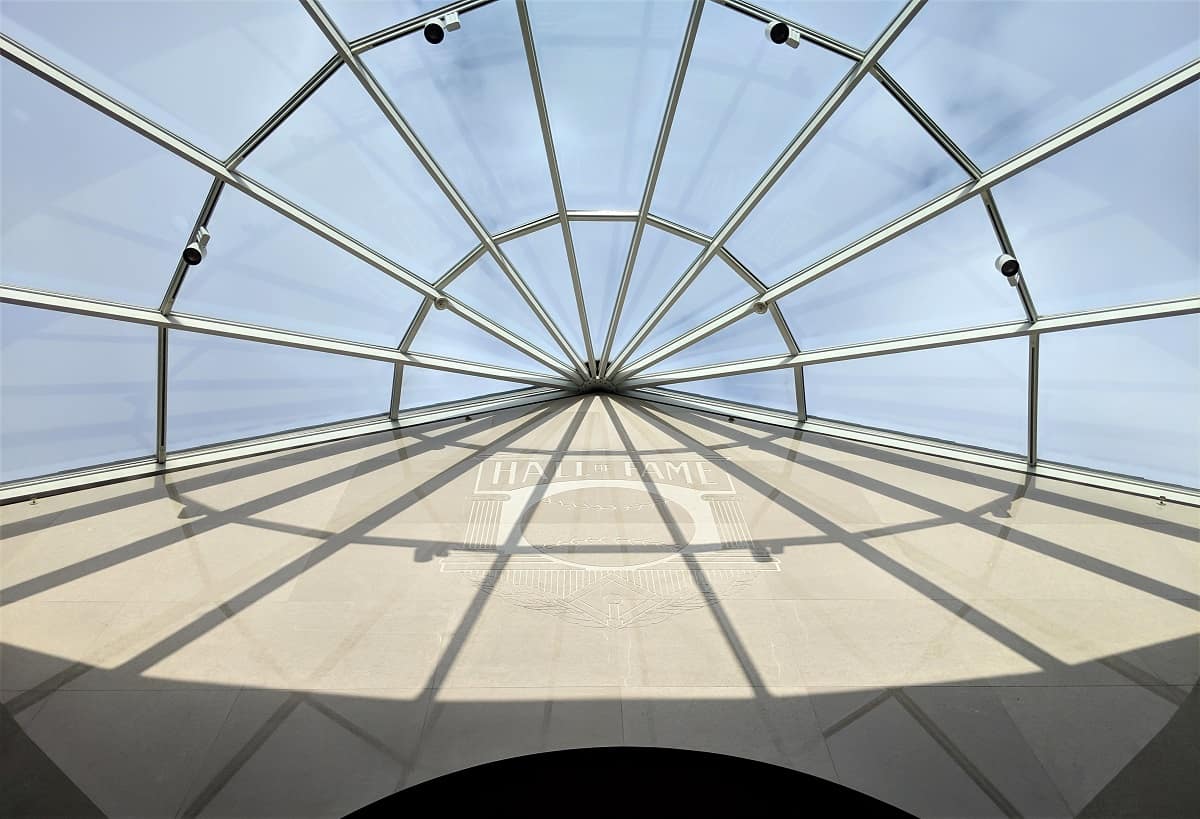The Hall of Fame Class of 2020 will be unveiled at 5 p.m. CT today, and just like last year, it's a low-stress occasion for the White Sox, who have already locked in a reason to celebrate in Cooperstown this summer.
Derek Jeter is the only one who will be flying in. He's running at 100 percent on Ryan Thibodaux's Hall of Fame ballot tracker, and I wouldn't be surprised if he joined Mariano Rivera as the only unanimous inductees.
And I wouldn't be surprised if he were the only player voted in by the Baseball Writers Association of America, either.
Jeter won't be entirely on his own. Ted Simmons and Marvin Miller got in through the Modern Era Ballot, and while Hawk Harrelson isn't officially a Hall of Famer -- Frick Award recipients are listed in a different wing of the museum -- he'll bring White Sox fans to Cooperstown that weekend for his ceremony, which is the day before the main event.
It's a grind for most everybody else, though, especially Larry Walker, who is on his 10th and final year of eligibility. He's currently running at 83.8 percent, but his case tends to get ignored by voters who don't make their ballots public in advance. Last year, his public vote pull was 11.3 percent higher than his private pace. If he suffered from a comparable gap this time around, his final vote total would fall short of the 75 percent threshold required for induction.
Curt Schilling is in a similar position, although he's got two more chances afterward, and he'd already be in if he were a halfway decent human being. Here's how the other returning candidates look when sized up against the percentage of votes gained and last year.
| Player | Current | % gained/lost |
|---|---|---|
| Larry Walker | 83.5 | --11.3 |
| Curt Schilling | 78.8 | -8.9 |
| Barry Bonds | 71.7 | -11.6 |
| Roger Clemens | 70.8 | -11.6 |
| Omar Vizquel | 49.5 | 4.4 |
| Scott Rolen | 47.6 | -3.9 |
| Gary Sheffield | 36.3 | -0.2 |
| Billy Wagner | 34.9 | -0.5 |
| Jeff Kent | 33.0 | 0.9 |
| Todd Helton | 32.1 | -1.2 |
| Manny Ramirez | 31.6 | -2.6 |
| Andruw Jones | 24.1 | -0.7 |
Of all the players ascending toward 75 percent, Rolen has made the most dramatic jump. He's approaching 50 percent on the ballot in his third year after garnering just 17.2 percent of the vote last year, which is a remarkable upswing. Sheffield and Helton are roughly doubling their support from last year, which is the kind of trajectory they needed at this stage in their candidacies.
So it's not all bad for the fringe candidates. More good news -- next year's Hall of Fame ballot doesn't feature any new locks, either. Mark Buehrle and Tim Hudson are the best of the bunch, so nobody from the outside is going to be blocking ballot spots for players who need every one they can get.
* * * * * * * * *
That's also a plus for Buehrle, who should have the time and space to have the unique merits of his case discussed and considered. There will also be a little more room to get The Hey, Nice Career Nod that used to be more prevalent before the ballot got jammed up with 15 or more deserving candidates for 10 spots.
Fellow White Sox retired number Paul Konerko hasn't been able to exceed expectations, who has received just one public vote. It was a hometown salute from Scot Gregor, who also included votes for eight others, and might be the template for the Buehrle ballots next year.
Konerko's road looked like a perilous climb for the start, but there's reward in even being eligible for votes. His appearance on the ballot afforded terrific retrospectives on his career like this one from James Fegan.
As a professional hitter, Konerko stands out to his peers for his sincere efforts to conquer the medium intellectually. Whereas Konerko respects the logic of the current mindset of hitters repeating a maximalist, power-oriented swing, it’s the antithesis of what he had achieved by the end of his career — an endless library of swing adjustments and approach variations that he toggled through game to game, matchup to matchup, at-bat to at-bat and pitch to pitch.
The end result at the conclusion of an 18-year big league career was a mastery of hitting strategy that his peers both romanticize and envy.
I've long considered the ballot to be a temporary Hall of Fame of sorts, because even if a player only tops out at 20 percent of the vote, that's 10 years that his name and accomplishments are recognized and reviewed by the baseball public. It might not be a proper tribute and enshrinement, but it's more attention than 95 percent of his peers receive. It just so happens that one has to be better than 99 percent of his peers to gain entry in the Hall of Fame, and a plaque takes on a lot more meaning when realizing the difficulty of conquering that last 3 percent.





